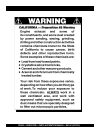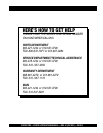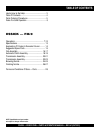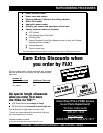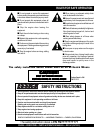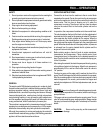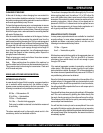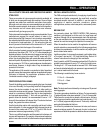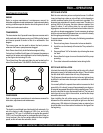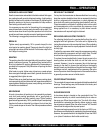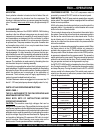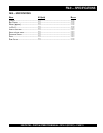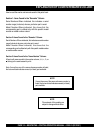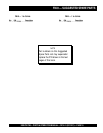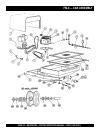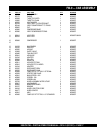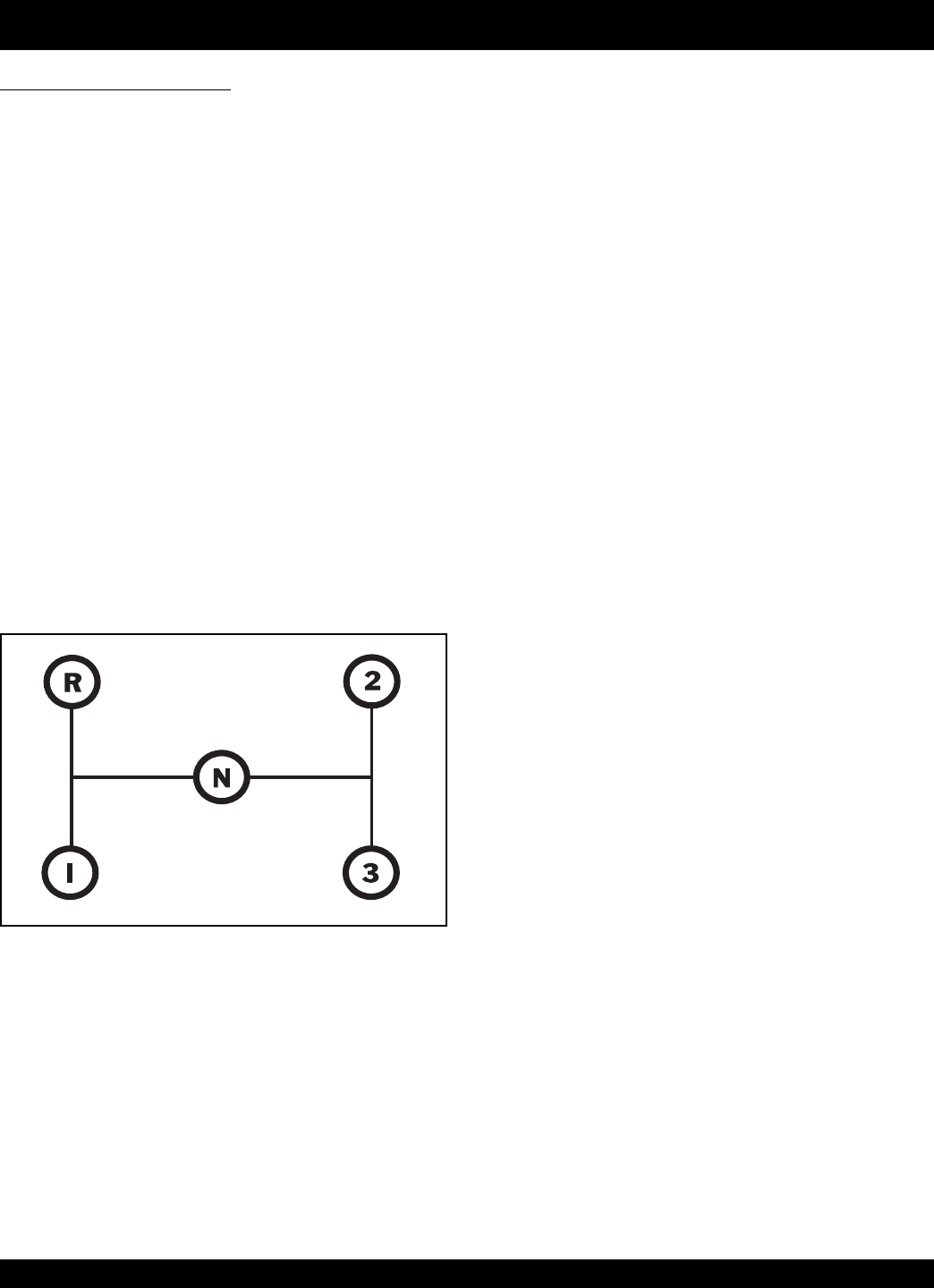
PAGE 10 — ESSICK FM9 — PARTS & OPERATION MANUAL — REV. #1 (03/12/01)
FM-9 — OPERATIONS
MAINTENANCE OF MACHINE
ENGINE
Refer to engine manufacturer’s maintenance manual for
lubrication, adjustments and maintenance. Under extremely dusty
working conditions special attention should be given to air and
oil filters and crankcase breather.
TRANSMISSION
The transmission has 3 speeds forward plus one reverse and is
totally enclosed with all gears running in oil. Shifting to the forward
and reverse speeds is similar to that of an automobile. See
diagram.
The reverse gear can be used to relieve the back pressure
whenever the hose or pump becomes clogged.
Note: Gears should only be shifted when engine is idling.
If at any time it is difficult to shift gears, it is because the gears are
meeting at flat points and realignment can be fired by speeding
up the engine and returning it to idle.
The oil level plug, filter plug and drain plug are located on the
side of the transmission. Use SAE 90 oil and check monthly.
COMPRESSOR
Refer to compressor manufacturer’s maintenance manual for
lubrication, adjustments and maintenance.
CLUTCH
The clutch is a centrifugal type clutch and is fully automatic. It is
set at the factory to start engaging at 1600 r.p.m. and is fully
engaged at 1700 r.p.m. It is ineffective at engine idle speed of
1550 r.p.m. Do not idle engine for prolonged periods of time, as
it may overheat. Also, be sure engine does not idle at a higher
speed, as this will wear the automatic, clutch.
ROTOR AND STATOR
Both the rotor and stator parts are subjected to wear. It is difficult
to say just how long a stator or rotor will last, as this depends on
various conditions under which the machine is operated. The
abrasive type materials will cause the most wear. Therefore, to
prolong the life of the pump, the stator tubes are made of two
types of rubber: A soft rubber stator for use with abrasive
aggregates, such as sand or perlite and a hard rubber stator for
use with non-abrasive aggregates. It is not necessary to replace
both the rotor and stator at the same time, as a rotor will normally
last through approximately 3 stator tubes.
To prevent excessive wear of the pump, the following precautions
should be taken.
1. Do not use long hoses. Use as short a hose as feasible.
2. Avoid the use of extremely stiff materials. They reduce the
volume.
3. Ensure sufficient “fat” for lubrication by not having the mixes
too “lean”.
4. Never allow the hopper to run out of material with the pump
operating.
5. Turn stator tube end for end about twice during its life.
ROTOR AND INSTALLATION
Lubricate the inside of the stator tube and the rotor with a liquid
detergent or soap (oil will deteriorate the rubber). This will make
the rotor slide into the stator tube with very little pressure.
The fit between the stator and rotor has to be very tight and may
be difficult to achieve when these parts are assembled without
lubrication.
It is normally difficult to operate the machine in second or third
gear with the “hi volume” pump until approximately one days run
of material has passed through the newly installed pump. This is
due to the fact that the rotor must smooth itself out. The rotor and
stator have to be very tight in the machine, as well as the clamp
around the stator tube.
Upon installing the soft rubber pump you will find that the fit
between the rotor and stator is not quite as tight as on the hard
rubber pump. With lubricant in the pump (water or material) you
should be able to run the machine in second or third gear from
the beginning.



